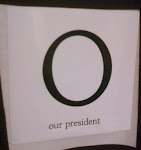 W.D. Snodgrass passed away today at the age of 83. His fans will miss him dearly; however, he is still very much alive in his work. Snodgrass is often said to be one the of founding members of the school of confessional poetry, but it should be noted that many sources state he was not a fan of the term confessional poetry.
W.D. Snodgrass passed away today at the age of 83. His fans will miss him dearly; however, he is still very much alive in his work. Snodgrass is often said to be one the of founding members of the school of confessional poetry, but it should be noted that many sources state he was not a fan of the term confessional poetry. Thinking of Snodgrass makes me think of Anne Sexton. In celebration of Snodgrass's life, I share an excerpt from Diane Middlebrook's Anne Sexton: A Biography:
[Sexton] also spent hours examining the poems in a book that all her friends in John Holmes's class were reading: New Poets of England and America, with a preface by Robert Frost.
This anthology was widely discussed in the poetry world, largely because it assembled so much that was academic and conservative in mainstream American writing. Detractrs dismissed it as "gray flannel poetry." But in its pages, sometime in mid-March, Sexton encountered a poem that had a definitive influence on her development: "Heart's Needle," by William DeWitt Snodgrass. Unlike many of the other poems in the anthology, "Heart's Needle" had a personal theme. It was addressed to the poet's three-year old daughter, separated from him by divorce --- a topic that spoke loud and clear to Sexton, whose own toddler still lived with Billie.
In "Heart's Needle," Snodgrass balances images of the Korean War, which began during the winter of his daughter's birth, against images of caretaking. During her visits he and the little girl plant a garden, go bird watching in the marshes, feed animals in the park. He learns to cook so he fan fix her supper. The context of the war functions to illuminate the plight of loveless men doomed to banishment and conflict. The divorced father feels as helpless and lonely as the soldiers freezing in a foreign country, longing for home: "I've gone / As men must." The poem's emotional center is Snodgrass's claim that "I am your real mother"; what does a man need to change in himself in order to care for a child? A new marriage gives him a comforting structure for his life, but for instruction in the role of father he visits the Museum of Natural History, where the dioramas of wildlife offer him vignettes f relationship that he rakes to heart.
The poem ends in the spring, with a visit to the zoo. Nothing is resolved in the ongoing war between the child's parents, but life reasserts itself in new generations. Some bonds are simply given, whether or not they are understand.
"Heart's Needle" engaged issues central in Sexton's therapy; as she later recalled, "I ran up to my mother-in-law's house and brought my daughter home. That's what a poem should do -- more people to action. True, I didn't keep my daughter at the time -- I wasn't ready. But I was beginning to be ready."
The impact of "Heart's Needle" on the poetry world was also dramatic and immediate. In retrospect, this poem can be singled out as the first in what became known as the "confessional" mode of contemporary poetry, mainly because it was emulated by Robert Lowell, the most influential poet in Boston, perhaps in America, at the time. Snodgrass had been a student of Lowell's at the University of Iowa.
Click here to read "Heart's Needle" by W.D. Snodgrass.




1 comment:
I was W.D. Snodgrass' best friend and primary companion during 1979-80.
This was at Norfolk, Virginia and up into Delaware. He did return to visit me at times. Although I was later his poetry student, I was also a library researcher and visual artist. I had done enough coursework for a doctorate in literature, was accepted for one at U. of Virginia and Duke, but could not leave my current location. I do have several Master's, one in library admin. There is his work that only I can know the meaning. I hope I can count on you as a future reader.--Myreen Moore Nicholson
Post a Comment